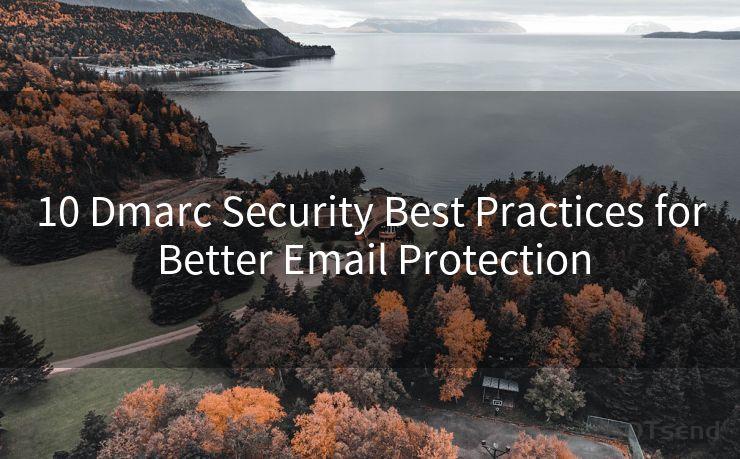10 Dmarc Security Best Practices for Better Email Protection




Email remains a crucial communication tool in today's digital world, but it's also a common target for cyberattacks. To enhance email security, organizations are increasingly adopting DMARC (Domain-based Message Authentication, Reporting, and Conformance) protocols. DMARC helps reduce email spoofing and phishing attacks by ensuring that only authorized senders can send emails from a specific domain. In this article, we'll explore ten DMARC security best practices for better email protection.
1. Understand DMARC Basics
Before implementing DMARC, it's essential to understand its fundamentals. DMARC builds upon SPF (Sender Policy Framework) and DKIM (DomainKeys Identified Mail) to authenticate emails and provides a mechanism to report on email authentication results.
2. Define a Clear DMARC Policy
Organizations should define a clear DMARC policy that aligns with their security objectives. This policy should specify the actions to be taken when emails fail authentication, such as quarantining or rejecting unauthenticated messages.
3. Implement SPF Records
SPF records help verify the IP addresses authorized to send emails from your domain. Ensure your SPF records are properly configured and up to date.
🔔🔔🔔
【AOTsend Email API】:AOTsend is a Managed Email Service for sending transactional emails. Support Email Types: reminders, authentication, confirmations, notifications, verification codes, invoices, password resets, account activations, billing statements, two-factor authentication (2FA), and one-time passwords (OTP) emails, etc. $0.28 per 1000 Emails. 99% Delivery, 98% Inbox Rate.
You might be interested in:
Why did we start the AOTsend project, Brand Story?
What is a Managed Email API, How it Works?
Best 25+ Email Marketing Platforms (Authority,Keywords&Traffic Comparison)
Best 24+ Email Marketing Service (Price, Pros&Cons Comparison)
Email APIs vs SMTP: How they Works, Any Difference?
4. Enable DKIM Signing
DKIM signing adds a digital signature to outgoing emails, verifying their authenticity. Enabling DKIM is crucial for DMARC compliance and email security.
5. Gradually Transition to a Reject Policy
When implementing DMARC, it's advisable to start with a monitoring-only policy (p=none) and gradually transition to a quarantine (p=quarantine) or reject (p=reject) policy as you gain confidence in your email authentication setup.
6. Regularly Monitor DMARC Reports
DMARC generates reports on email authentication results. Regularly reviewing these reports helps identify and address any issues with your email infrastructure.
7. Enforce TLS Encryption
While not directly related to DMARC, enforcing TLS encryption for email transmission adds another layer of security, ensuring that emails are securely transmitted between servers.
8. Train Employees on Email Security
Employee training on email security best practices, including recognizing and avoiding phishing attacks, complements the technical measures implemented through DMARC.
9. Keep Software and Systems Updated
Regularly updating your email servers, clients, and related software helps protect against known vulnerabilities.
10. Continuously Audit and Adjust Your DMARC Policy
As your email infrastructure and security needs evolve, continuously audit and adjust your DMARC policy to ensure optimal protection.
By following these 10 DMARC security best practices, organizations can significantly enhance their email protection, reducing the risk of spoofing, phishing, and other cyber threats. Remember, email security is an ongoing process that requires regular monitoring and adjustment to stay ahead of evolving threats.





Scan the QR code to access on your mobile device.
Copyright notice: This article is published by AotSend. Reproduction requires attribution.
Article Link:https://www.mailwot.com/p719.html



